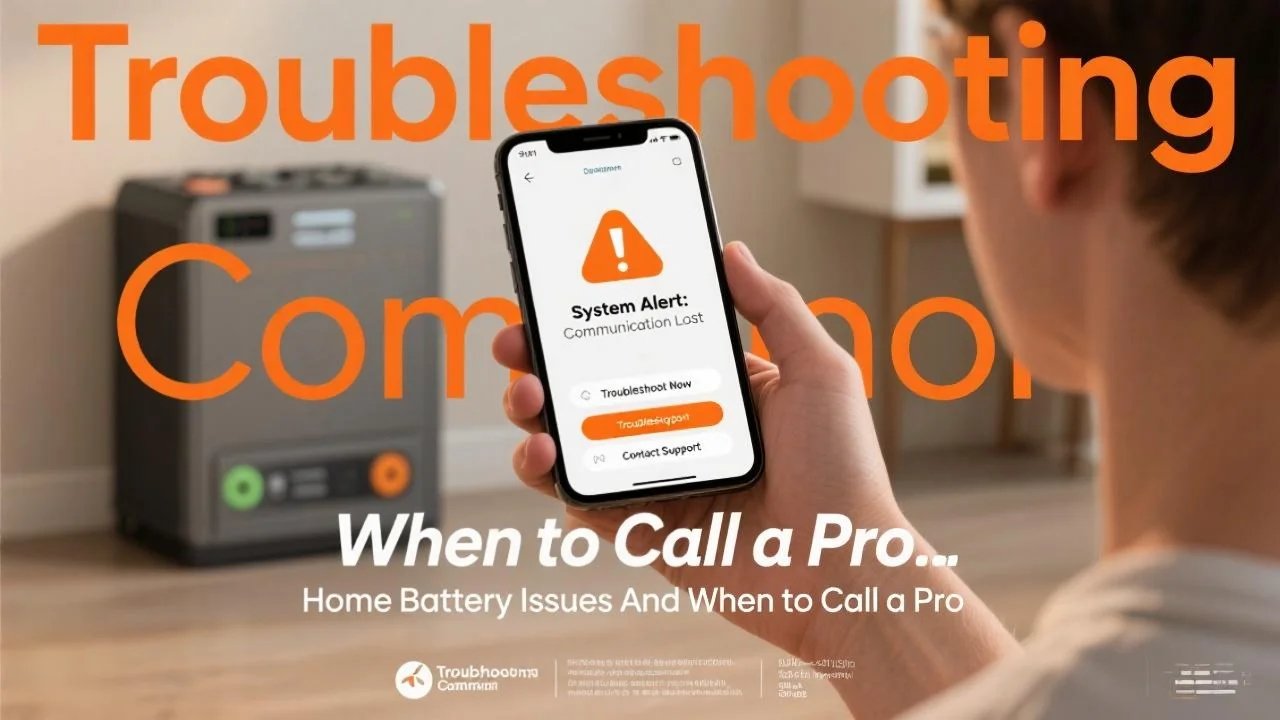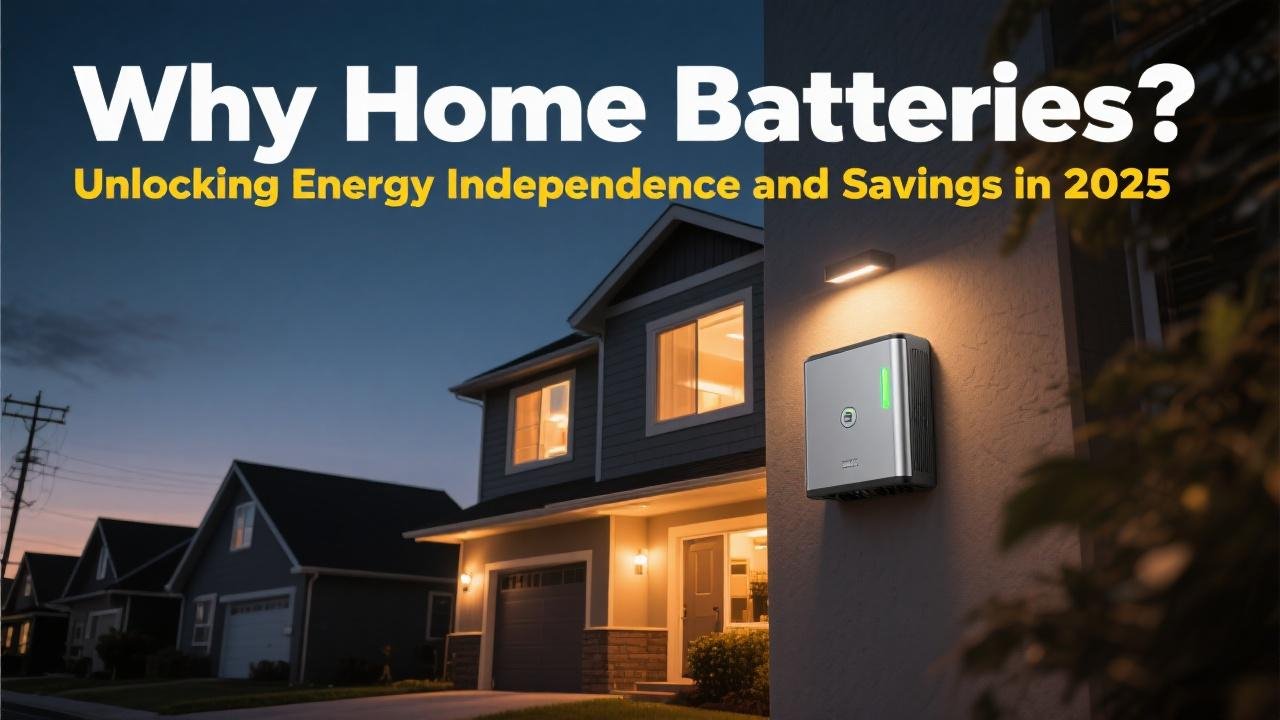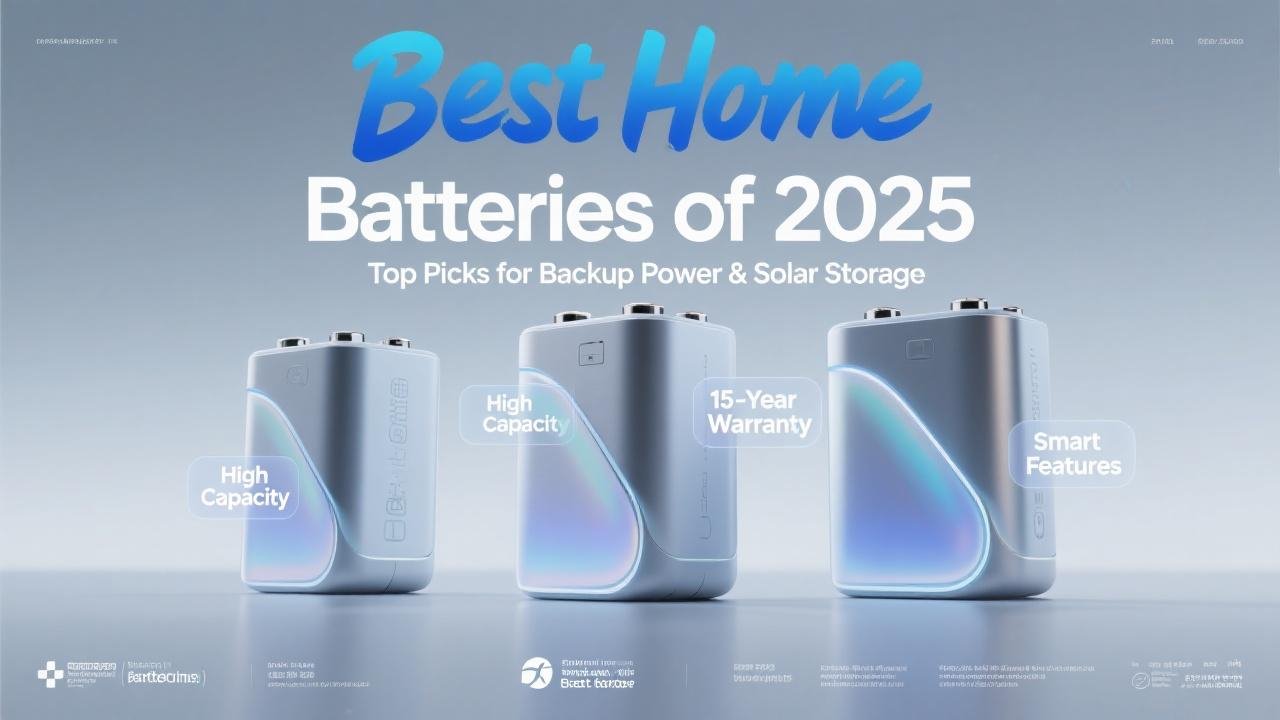Introduction: Keeping Your Home Energy Storage System Running Smoothly
Your home battery storage system, installed in 2025, is a sophisticated piece of technology designed to provide reliable backup power and optimize your solar energy usage. While modern batteries like the Tesla Powerwall, Enphase IQ Battery, or Bluetti EP900 are built for durability and often come with advanced monitoring, occasional issues can arise. Knowing how to identify common problems and when to perform basic troubleshooting versus calling a professional can save you time, frustration, and ensure your system continues to operate safely and efficiently.
This guide covers some common home battery issues and provides general troubleshooting tips. Always remember to consult your manufacturer’s manual and prioritize safety. For complex issues or anything involving electrical wiring, professional help from your installer or a qualified technician is essential.
Common Home Battery Issues and Basic Troubleshooting:
1. Battery Not Charging or Discharging as Expected:
- Possible Causes:
- Incorrect system settings or mode (e.g., set to “backup-only” when you expect it to discharge for self-consumption).
- Communication error between the battery, inverter, and monitoring system.
- Tripped breaker or blown fuse in the battery system or associated electrical panel.
- Issue with the solar PV system (if solar-charged), such as an inverter fault or panel shading, preventing adequate charge.
- Battery Management System (BMS) has detected an issue and limited operation for safety.
- Extreme temperatures affecting battery performance.
- Basic Troubleshooting:
- Check System Mode: Via your monitoring app or control panel, verify the battery is in the correct operational mode (e.g., “self-consumption,” “backup,” “time-of-use optimization”).
- Review Monitoring System: Look for any error codes, alerts, or warnings displayed on your monitoring app or the battery unit itself. Consult your manual for what these codes mean.
- Check Breakers: Carefully inspect the circuit breakers associated with your battery system, inverter, and solar PV system in your main electrical panel and any sub-panels. If a breaker is tripped, you can try resetting it ONCE. If it trips again immediately, do not reset it and call a professional.
- Restart the System (If Recommended by Manual): Some systems may have a specific restart procedure outlined in the user manual. Follow this precisely. If unsure, do not attempt.
- Verify Solar Production (if applicable): Check if your solar panels are generating power as expected. If not, the battery may not be receiving a charge.
- Check Temperature: Ensure the battery is operating within its specified temperature range. If it’s extremely hot or cold in the battery’s location, this could impact performance.
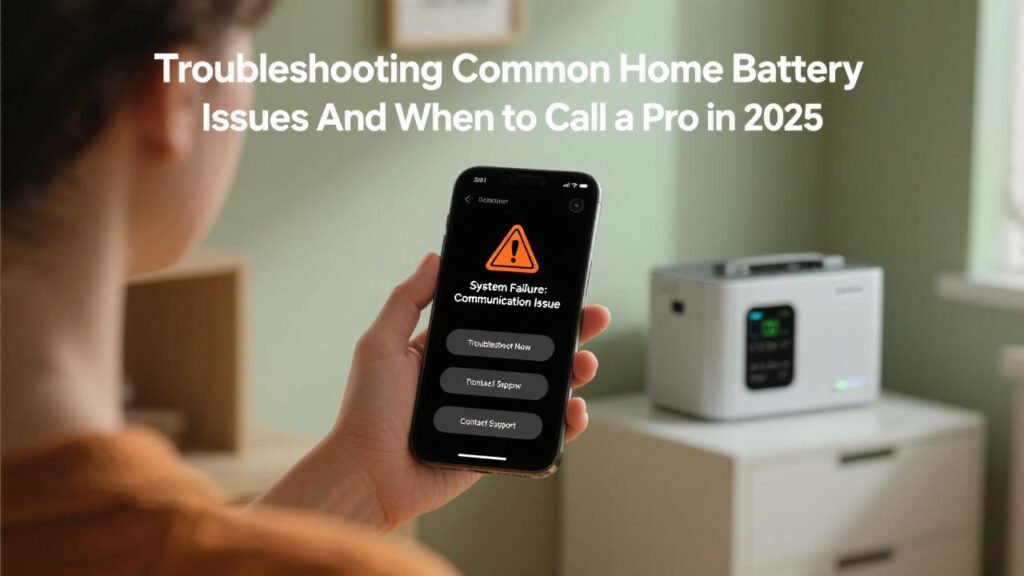
2. Battery Backup Did Not Engage During a Power Outage:
- Possible Causes:
- Automatic Transfer Switch (ATS) malfunction or incorrect wiring.
- Battery state of charge was too low when the outage occurred.
- System was not configured correctly for backup power (e.g., essential loads not properly assigned to the backed-up circuits).
- A breaker related to the backup circuit tripped.
- The BMS detected an issue and prevented discharge.
- Basic Troubleshooting:
- Check Battery Charge Level: Once power is restored (or via your app if it has cellular backup), check the battery’s state of charge leading up to the outage.
- Review Backup Settings: Ensure your system is configured to provide backup power and that the correct circuits/appliances are designated as “essential loads.”
- Inspect ATS (Visually, if accessible and safe): Look for any obvious signs of damage, but do not attempt to manipulate it.
- Check Breakers for Backed-Up Loads: Ensure breakers for circuits intended for backup are not tripped.
3. Monitoring System Not Working or Showing Incorrect Data:
- Possible Causes:
- Loss of internet connectivity (Wi-Fi or Ethernet) for the monitoring system.
- Communication issue between monitoring hardware and the battery/inverter.
- Software glitch or outdated firmware.
- Problem with the monitoring sensors.
- Basic Troubleshooting:
- Check Internet Connection: Ensure your home internet is working and that the battery’s monitoring gateway is connected (check Wi-Fi settings or Ethernet cable).
- Restart Monitoring Gateway/Router: Try restarting your internet router and the battery’s communication gateway (if separate) according to manufacturer instructions.
- Check for Software/Firmware Updates: See if there are pending updates for your battery system or monitoring app.
- Consult Manufacturer Support: Many manufacturers offer online support or helplines for monitoring issues.
4. Unusual Noises or Odors from the Battery Unit:
- Possible Causes:
- Normal operational sounds (e.g., fan cooling, inverter hum) – familiarize yourself with these.
- Abnormal sounds (loud buzzing, clicking, whining) could indicate an internal component issue.
- Unusual odors (e.g., burning plastic, acrid smells) could signify a serious problem like overheating or a component failure.
- Action:
- If you hear loud, unusual noises or detect any strange odors, especially burning smells, this could be a serious safety concern.
- Prioritize Safety: If you suspect a serious issue, maintain a safe distance. If there’s any sign of smoke or fire, evacuate the area immediately and call emergency services (911 or your local fire department).
- Contact Your Installer or Manufacturer Urgently: Do not attempt to troubleshoot further yourself.
5. Reduced Battery Capacity or Shorter Backup Times Than Expected:
- Possible Causes:
- Normal battery degradation over several years of use (all batteries lose some capacity over time).
- Consistently high ambient temperatures accelerating degradation.
- Incorrect system settings leading to deeper-than-optimal daily discharges (though BMS usually manages this).
- One or more faulty cells within the battery pack.
- Higher-than-anticipated energy consumption from backed-up loads.
- Basic Troubleshooting:
- Review Historical Performance: Use your monitoring system to compare current capacity/backup duration with earlier performance.
- Assess Load: Double-check which appliances are running during an outage or being powered by the battery daily. Are there new high-draw appliances?
- Check Operating Temperatures: Ensure the battery isn’t consistently exposed to excessive heat.
- Consult Warranty: Review your battery’s performance warranty to see if the degradation is within expected limits.
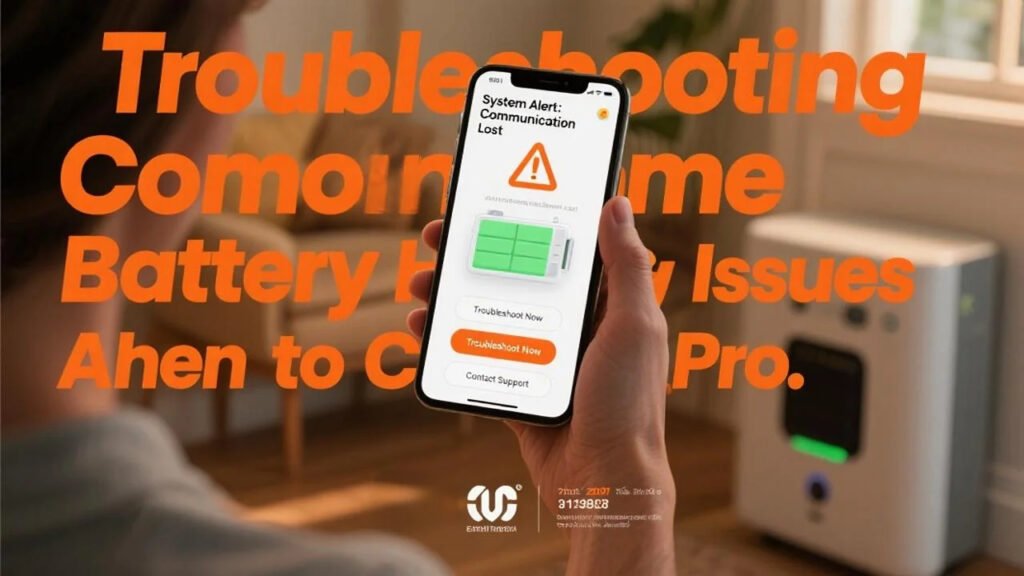
When to Call a Professional (Your Installer or a Certified Technician):
Immediately call your installer or a qualified technician if you experience:
- Any error codes or warnings on your system that you cannot resolve with the user manual.
- Repeatedly tripping breakers related to the battery or solar system.
- The battery backup system failing to engage during multiple outages.
- Any physical damage to the battery unit, inverter, or wiring.
- Unusual loud noises, strong odors (especially burning smells), smoke, or signs of overheating from the battery system.
- Water leakage around or into the battery system.
- If you are uncomfortable or unsure about performing any troubleshooting step.
Do NOT attempt to:
- Open the battery enclosure or inverter casing.
- Modify any electrical wiring.
- Bypass any safety features.
- Work on the system if you are not a qualified and certified professional. High voltages are present and can be extremely dangerous.
Maintaining Your Energy Peace of Mind
Your 2025 home battery storage system is designed for reliability and safety, but like all advanced technology, it benefits from informed ownership. By understanding common potential issues, knowing basic troubleshooting steps (primarily through your monitoring system and manual), and recognizing when to call in the professionals, you can ensure your system operates effectively and safely for its full lifespan.
Always prioritize safety and consult your installer or a certified technician for any concerns beyond simple monitoring checks or system resets outlined in your user manual. Reputable installers, like those found through EnergySage, will provide post-installation support and guidance for any operational questions or issues you may encounter.

